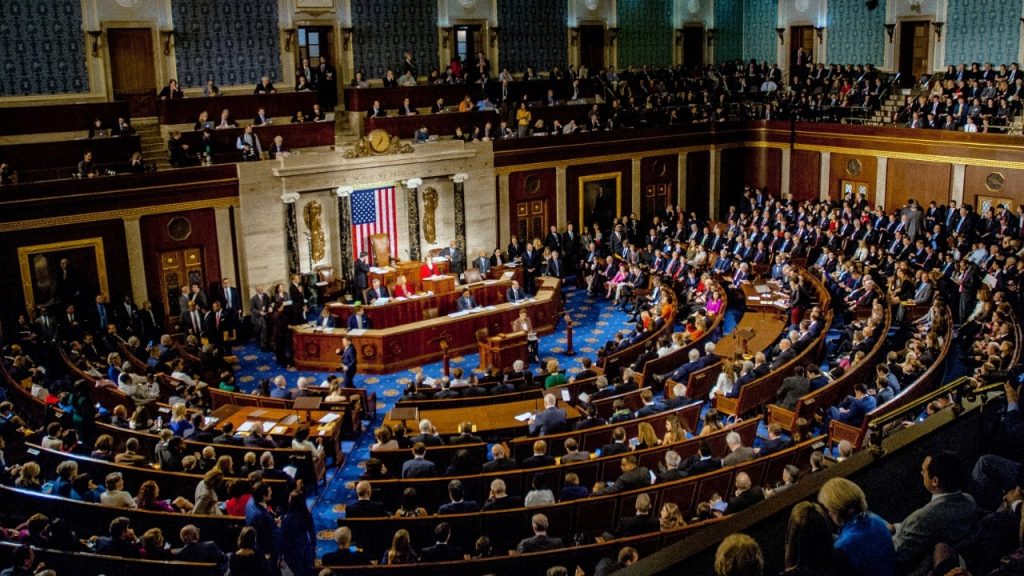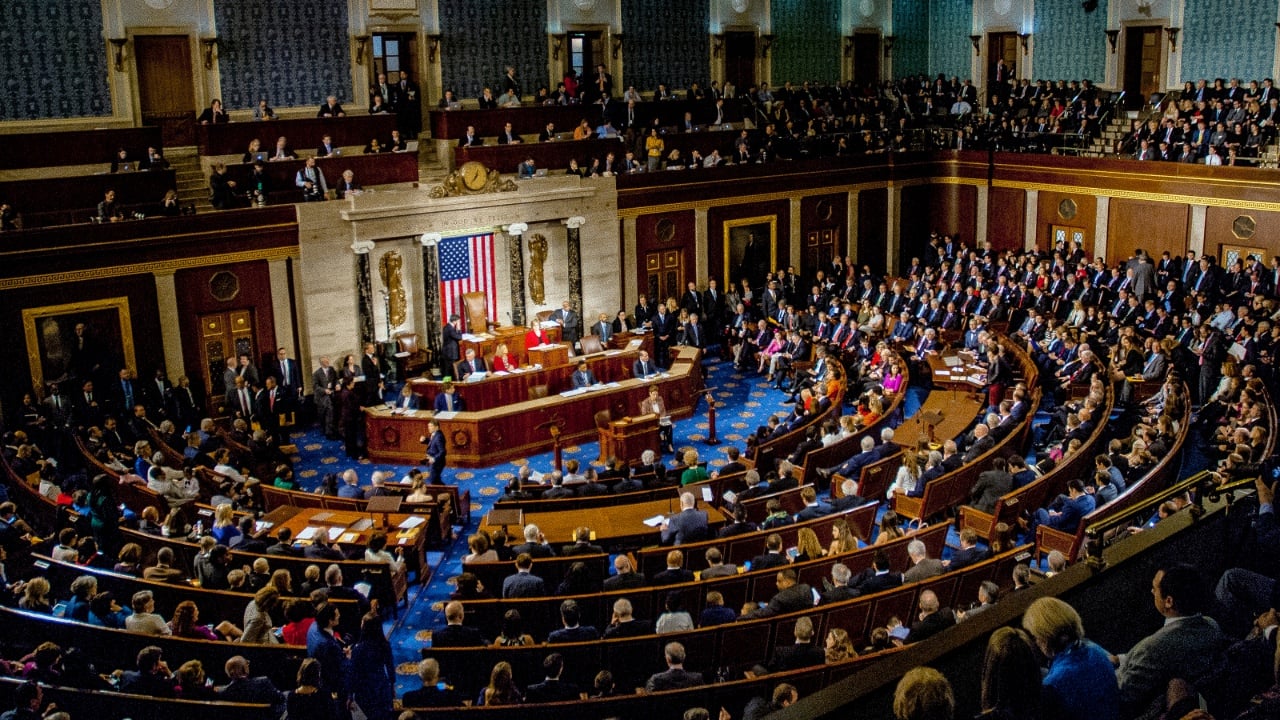
The Legislative Turning Point: A Comprehensive Analysis of “Crypto Week” and Its Implications
Introduction: A Watershed Moment for Digital Assets
The cryptocurrency landscape has long been characterized by volatility, innovation, and regulatory ambiguity. However, a recent period dubbed “Crypto Week” marked a significant shift in this dynamic. This concentrated burst of legislative activity in the United States signaled a potential turning point in how digital assets are perceived, regulated, and integrated into the broader financial ecosystem. The events of “Crypto Week” not only provided a glimpse into the future of cryptocurrency regulation but also highlighted the growing influence of digital assets on global markets and technological innovation.
Legislative Firepower: The Bills That Shaped “Crypto Week”
The U.S. House of Representatives took center stage during “Crypto Week,” debating and passing several key bills aimed at addressing the regulatory gaps in the cryptocurrency industry. These legislative efforts were not merely symbolic; they represented a concerted push to establish a clear and consistent framework for digital assets. The bills introduced during this period addressed various aspects of the crypto landscape, from innovation and classification to privacy and surveillance.
The GENIUS Act: Fostering Innovation and Understanding
One of the most notable pieces of legislation introduced during “Crypto Week” was the GENIUS Act. While the specifics of the Act may evolve, its overarching goal is to promote innovation and understanding of blockchain technology and digital assets. The Act aims to create a more conducive environment for the development and deployment of blockchain-based solutions. By encouraging technological advancement, the GENIUS Act signals a commitment to embracing the potential of digital assets while ensuring that the industry operates within a well-defined regulatory framework.
The CLARITY Act: Bringing Clarity to Regulatory Ambiguities
The CLARITY Act emerged as another crucial piece of legislation during “Crypto Week.” This Act seeks to address the regulatory ambiguities that have long plagued the cryptocurrency industry. By defining which cryptocurrencies should be classified as securities and which should be treated as commodities, the CLARITY Act aims to bring clarity to the regulatory landscape. This distinction is critical, as it determines which regulatory bodies—such as the Securities and Exchange Commission (SEC) or the Commodity Futures Trading Commission (CFTC)—have jurisdiction over different types of digital assets. Clearer classifications would enable businesses operating in the crypto space to better understand and comply with existing regulations, fostering a more stable and predictable environment for innovation and investment.
The Anti-CBDC Surveillance State Act: Addressing Privacy Concerns
The Anti-CBDC Surveillance State Act also garnered attention during “Crypto Week.” This Act is designed to prevent the creation of a central bank digital currency (CBDC) that could be used for surveillance or control of citizens’ financial transactions. The Act reflects growing concerns about privacy and government overreach within the digital currency space. As central banks around the world explore the potential of CBDCs, the Anti-CBDC Surveillance State Act serves as a reminder of the importance of balancing innovation with the protection of individual privacy and financial autonomy.
The passage of these bills through the House of Representatives represents a significant victory for the cryptocurrency industry. It demonstrates a growing recognition among lawmakers of the importance of digital assets and the need for a clear and consistent regulatory framework. However, the journey toward comprehensive regulation is far from over, as these bills must still navigate the Senate and the complexities of implementation.
Ethereum’s Rise: A Market Narrative Driver
While legislative developments dominated the headlines during “Crypto Week,” Ethereum also played a pivotal role in shaping market sentiment. Ethereum, the second-largest cryptocurrency by market capitalization, has increasingly become a focal point for innovation and development within the blockchain space. Its transition to a Proof-of-Stake (PoS) consensus mechanism, known as “The Merge,” captured the attention of investors and developers alike.
The Merge: A Catalyst for Market Optimism
The Merge, which marked Ethereum’s shift from a Proof-of-Work (PoW) to a PoS consensus mechanism, was a monumental achievement for the Ethereum network. This transition enhanced Ethereum’s scalability, security, and energy efficiency, positioning it as a leading platform for decentralized applications (dApps), decentralized finance (DeFi), and non-fungible tokens (NFTs). The success of The Merge not only bolstered investor confidence in Ethereum but also reinforced the broader narrative of blockchain technology as a transformative force in the digital economy.
Ethereum’s Influence on Market Sentiment
Ethereum’s continued innovation and market dominance have made it a primary driver of market sentiment. Positive developments on the Ethereum platform often lead to increased investor confidence and broader market optimism. During “Crypto Week,” Ethereum’s resilience and growth served as a counterbalance to the regulatory uncertainties, providing a sense of stability and direction for the cryptocurrency market.
Potential Impacts on the Cryptocurrency Market
The legislative developments and market dynamics of “Crypto Week” have the potential to significantly impact the cryptocurrency market in several ways. These impacts span from increased institutional investment to enhanced investor protection, fostered innovation, and job creation.
Increased Institutional Investment
Regulatory clarity is a critical factor in attracting institutional investors to the cryptocurrency market. Many institutional investors have been hesitant to enter the market due to regulatory uncertainty. With clearer rules and guidelines, they may feel more comfortable allocating capital to digital assets. This influx of institutional investment could lead to a surge in market liquidity and prices, further legitimizing cryptocurrencies as a viable asset class.
Enhanced Investor Protection
Clearer regulations can also provide enhanced protection for retail investors. By establishing guidelines for cryptocurrency exchanges, custodians, and other service providers, regulators can help prevent fraud and manipulation. This protection is essential for building trust in the cryptocurrency market and ensuring its long-term sustainability.
Fostered Innovation
A well-defined regulatory framework can foster innovation in the cryptocurrency space. By providing clear rules of the road, regulators can encourage entrepreneurs and developers to build new and innovative products and services without fear of running afoul of the law. This innovation is crucial for the continued growth and evolution of the cryptocurrency industry.
Job Creation
As the cryptocurrency industry matures and becomes more regulated, it is likely to create new jobs in areas such as compliance, legal, and technology. The increasing number of job postings related to crypto and blockchain technology on platforms like Indeed.com suggests a growing demand for skilled professionals in this field. This job creation not only benefits individuals but also contributes to the broader economy by fostering a skilled workforce capable of driving technological advancement.
Challenges and Concerns
Despite the positive developments during “Crypto Week,” several challenges and concerns remain. These challenges highlight the complexities of regulating a rapidly evolving industry and the need for a balanced approach that fosters innovation while protecting investors.
Senate Approval
The bills passed by the House of Representatives still need to be approved by the Senate. The Senate is often more deliberative and less likely to pass legislation quickly, so it is uncertain whether these bills will ultimately become law. The Senate’s approval process may involve further debate, amendment, and negotiation, which could delay or alter the final outcome of these legislative efforts.
Implementation
Even if the bills are passed into law, the implementation of the regulations could be challenging. Regulators will need to develop clear and consistent guidelines and enforcement mechanisms to ensure that the regulations are effectively implemented. This process may involve collaboration with industry stakeholders, legal experts, and technology professionals to create a framework that is both effective and adaptable to the rapidly changing landscape of digital assets.
Potential for Overregulation
There is also a risk that regulators could overregulate the cryptocurrency industry, stifling innovation and driving businesses overseas. It is important for regulators to strike a balance between protecting investors and fostering innovation. Overregulation could lead to a loss of competitiveness for the U.S. in the global cryptocurrency market, as businesses may seek more favorable regulatory environments in other jurisdictions.
Conclusion: A Cautiously Optimistic Future
“Crypto Week” represents a potentially landmark moment for the cryptocurrency industry. The passage of key bills by the House of Representatives signals a growing recognition among lawmakers of the importance of digital assets and the need for a clear regulatory framework. This legislative progress, coupled with Ethereum’s continued innovation and market dominance, suggests a potentially bright future for the cryptocurrency industry.
However, it is important to remain cautiously optimistic. The bills still need to be approved by the Senate, and the implementation of the regulations could be challenging. Moreover, there is a risk of overregulation that could stifle innovation. The cryptocurrency community must remain engaged in the legislative process and advocate for regulations that are both protective of investors and supportive of innovation. Continued dialogue between industry participants, regulators, and lawmakers is essential to ensure that the future of digital assets is one of responsible growth and widespread adoption. Only through vigilance and proactive engagement can the industry capitalize on the momentum of “Crypto Week” and build a sustainable and thriving ecosystem for digital assets.





